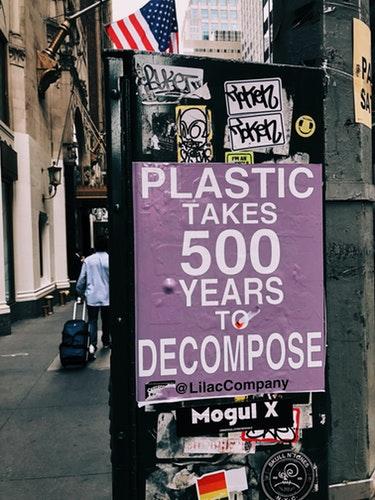You Can't Throw Stones in a Glass House; But What About Plastic?
- September 30 2018
- 3 min read
You Can't Throw Stones in a Glass House; But What About Plastic?

A Different Kind of Upcycling
A project in Nigeria is tackling plastic pollution and youth unemployment by building houses out of plastic bottles and sand.
In a neighborhood about 20 km (about 12 miles) from the Nigerian capital Abuja, the largest plastic house is in the middle of construction. More than 46,000 polyethylene terephthalate (PET) bottles have been used. These are the everyday single-use bottles used to house various waters, sodas, and juices. They were bought from waste collectors and given to the builder as donations.
Plastic waste is a huge problem for this country of 186 million people. They often block drainage systems--and torrential downpours only make things even worse! Unfortunately, there is currently no efficient waste management system in place for the 3.2 tonnes of garbage generated each year. This makes recycling programs more important than ever.
Yahaya Ahmad lived and worked in Germany for 27-years. During a visit home, the construction engineer was disturbed by the large-scale environmental pollution. "I simply had to do something," he said. Inspired by a friend telling him of a similar project happening in South America, "A friend in Germany told me about this method. I thought, 'We need that in Nigeria too.'"
Ahmed spent six months training experienced builders in this new technique. Financial support was provided by the German development ministry. Some of his students from as many as seven years ago have become instructors themselves. Ideally, their students will become instructors, creating a growing network of plastic house construction workers.
A quarter of 15 to 24-year-olds in Nigeria have no regular income. This leaves many of them on the streets and they beg or steal to survive. "These young people are extremely vulnerable to exploitation by politicians as agitators, or to becoming members of radical groups. That's why we want to give them an alternative." said Ahmad.
He and his siblings traveled 500 km (about 310 miles), from Katsina to the Nigerian capital of Abuja to find work. The then 15-year-old had previously worked as a cement factory worker making tiles. "The work on the building site is not as debilitating as it was in the factory. We also get regular pay or something to eat." Ahmad boasts.
The building process for these houses is relatively simple. Empty PET bottles are first filled with sand and rubble. Once full, they are stacked and bound with nylon cord. The last step is walling them up with clay and mortar. The method is not only eco-friendly, but cuts construction costs by about two-thirds!
Originally trained in traditional bricklaying, construction worker Siiba has been building plastic houses for the last seven years. "At first it's somewhat unusual to work with bottles," he stated. "But when one has already learned the technique, it is not that different."
Another benefit of this building method is stability. The sand-filled bottles are practically indestructible! Houses in Honduras, the inspiration for the project, have withstood 7.3 magnitude earthquakes! The builders also claim they are bulletproof.
Plastic bottles of all sizes and colors are used in the Nigerian project. The builders are allowed to let their imaginations run wild. In keeping with traditional decorative features in Northern Nigeria, various templates and colors are incorporated into the exterior walls.
What Can Americans Do?
To combat our own, growing environmental problems here in America, we can contribute to a greener world by reusing as many products as possible. This includes reusable bags and reusable bottles, among others. For all of your sustainable, eco-promotional needs, please visit Custom Earth Promos.
Gain access to Orders, Tracking, Custom Options and Much More!